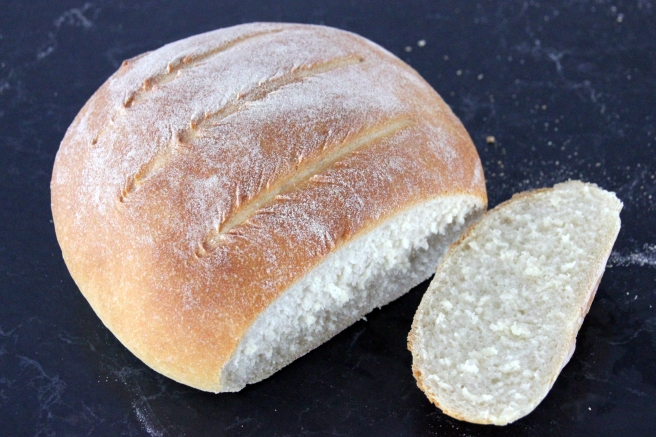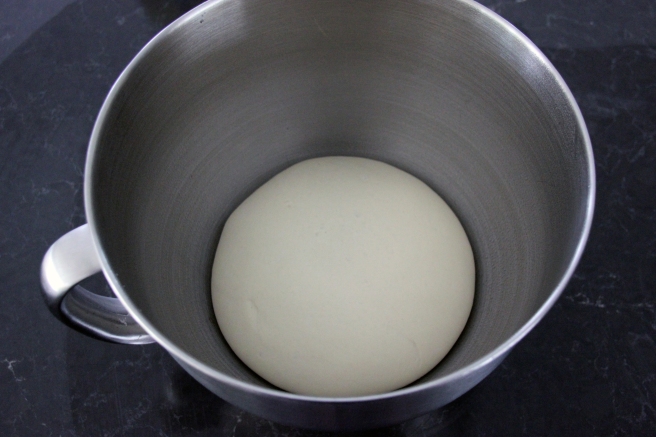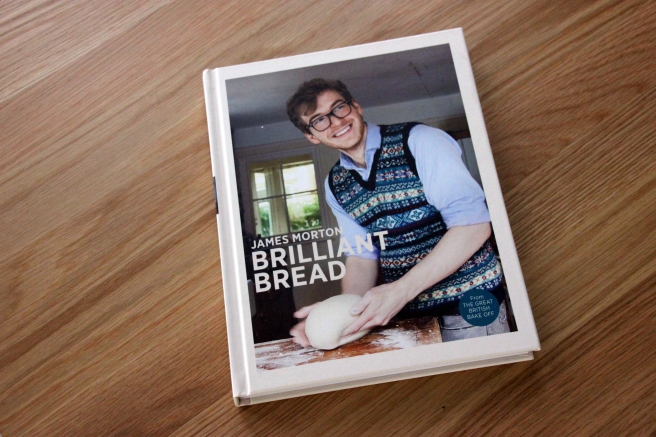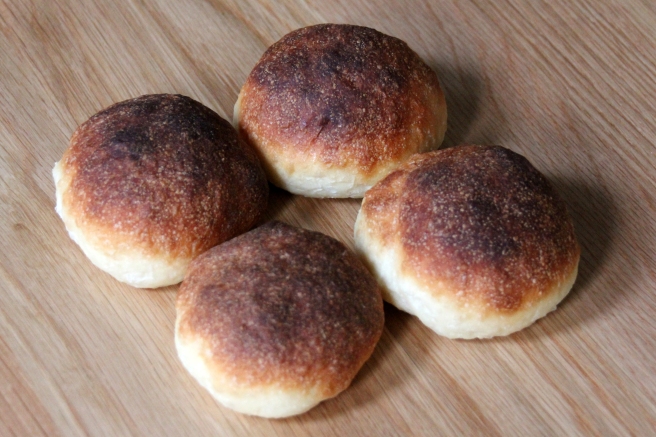
My husband is a huge fan of soft white rolls with peanut butter or cheese for lunch, so this post is for him.
Using milk in your dough rather than water will result in a richer bread with a more velvety texture.
It also makes a softer crust, but you can adjust your cooking method with this result to get a soft or crunchy crust.
Making a roll dough is exactly the same as making a loaf dough, but you’ll need to allow a lot more time for the shaping.
This recipe recommends rolling the dough out into a sausage shape, and then cutting off pieces of dough to then shape into rounds.

To do this you need to cup your hand, then place over the piece of dough and move it round and round in circles until you have a tight, even, round ball.
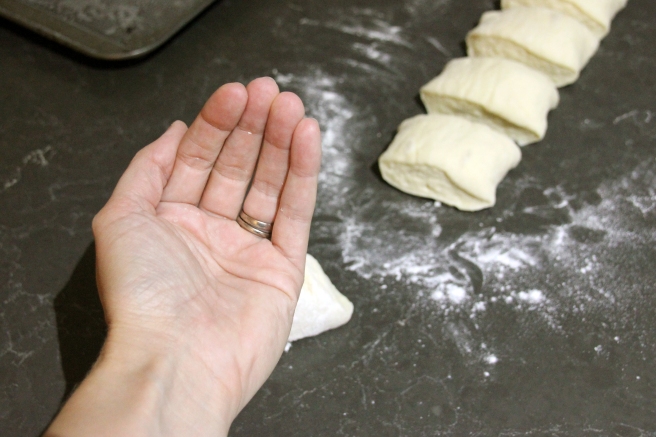
I’ve seen people do this with both hands at the same time, but I’m definitely too uncoordinated to try that just yet!
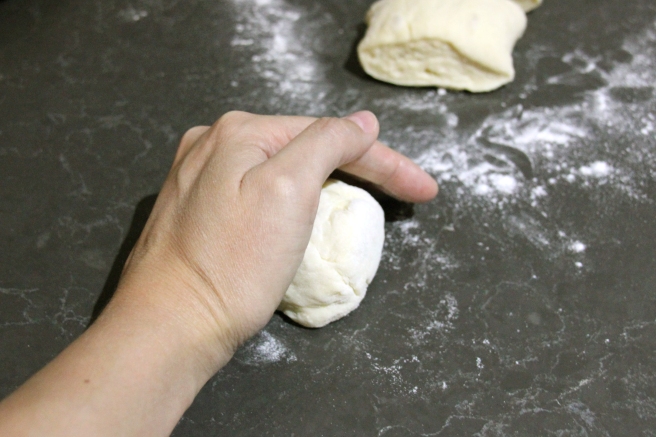
I also learned two other things from this recipe:
- I prefer to go with a kneaded method when making bread. This is a non-knead recipe which is supposed to be easier, but I found the length of time it took to proof multiple times frustrating. I also didn’t achieve quite the rise and airiness I was looking for.
- Milk-based rolls brown quicker because of their sugar content, so these came out a bit darker than I’d hoped but still tasted great.
Soft white rolls (from James Morton)
500g strong white flour
20g caster sugar
10g salt
1 x 7g sachet dried yeast
330g milk at room temperature
In a large bowl, mix together the flour and sugar. With your fingers, rub in the salt at one edge of the bowl and the yeast into the other end.
Add the milk and mix together until it forms a dough. Cover the bowl with cling film and leave to rest in a warm place for 30-40 minutes.
Wet your fingers and slide your fingertips between the bowl and the dough, then fold the dough in half. Turn the bowl a quarter turn, and repeat until you have removed all of the air and it is noticeably smoother. Cover your bowl again, and rest the dough for an hour.
Scrape the dough out onto a lightly floured surface an using floured hands, roll it out into a sausage shape. Cut the sausage in half and half again. Keep dividing until you have 12 rough pieces of dough.
Shape the pieces into balls, then place on an oiled baking tray.
Prove for a final hour or until they have doubled in size, then bake in a pre-heated oven at 230C for 10-15 minutes.

